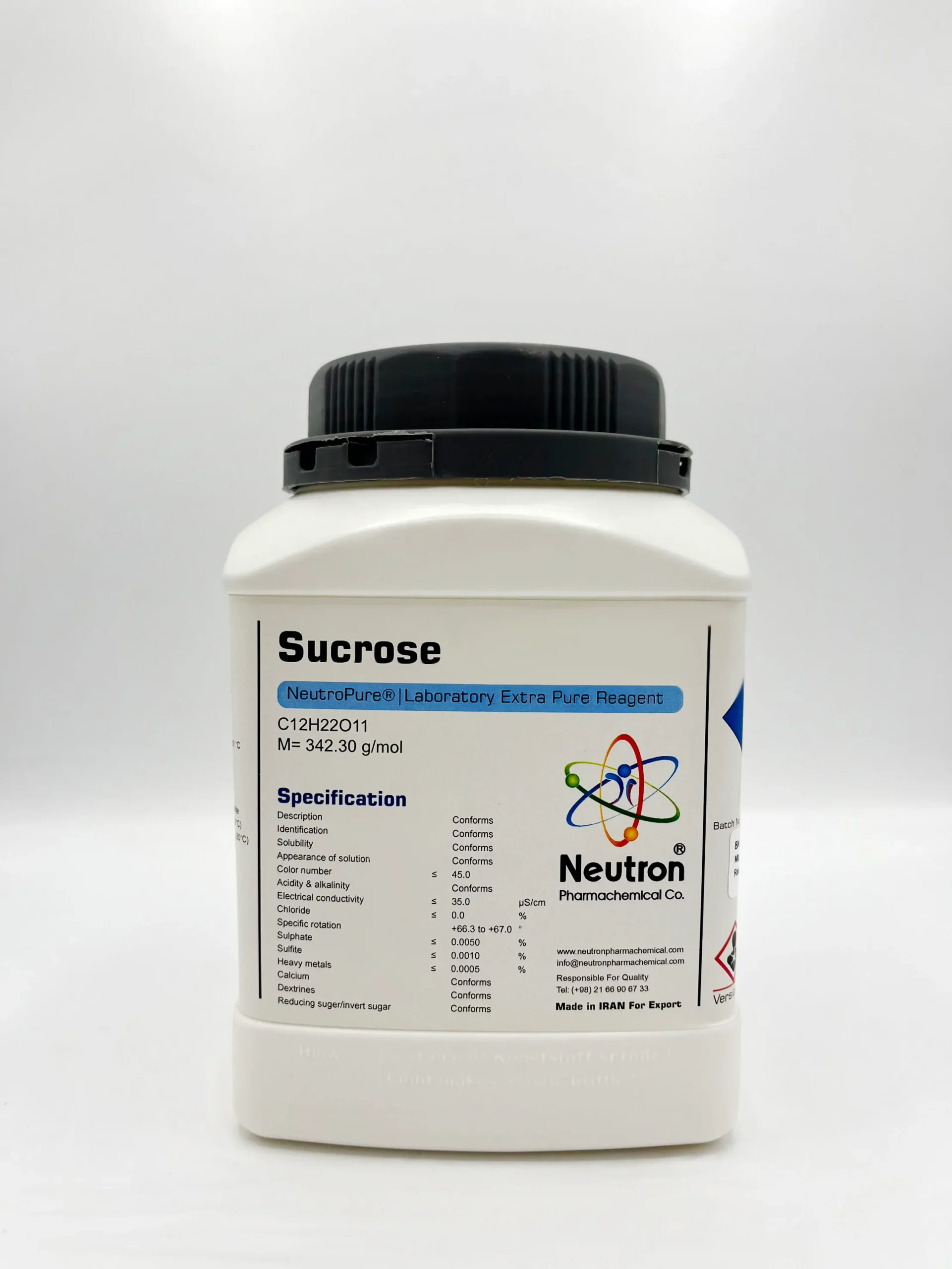ساکاروز
| Formula | C12H22O11 |
| Chemical formula | C12H22O11 |
| Molar mass | 342.30 g/mol |
| CAS number | 57-50-1 |
| HS Code | 17019910 |
| EC number | 200-334-9 |
| Storage | at +5 °C to +30 °C |
| SDS | available |
| RTECS | WN6500000 |
| Odour | odourless |
| Form | solid |
| Color | colorless to white |
| p H value | ~7.0(100 g/l 20°C) |
| Solubility in water | freely soluble (20°C) |
| Melting point | 169 – 170 °C |
| Termal decomposition | > 169 °C |
| Description | Conforms | ||
| Identification | Conforms | ||
| Solubility | Conforms | ||
| Appearance of solution | Conforms | ||
| Color number | ≤ | 45 | |
| Acidity & alkalinity | Conforms | ||
| Electrical conductivity | ≤ | 35 | μS/c |
| Chloride | ≤ | 0 | m |
| Specific rotation | +66.3 to +67.0 | % | |
| Sulphate | ≤ | 0.005 | 0 |
| Sulfite | ≤ | 0.001 | % |
| Heavy metals | ≤ | 0.0005 | % |
| Calcium | Conforms | % | |
| Dextrines | Conforms | ||
| Reducing suger/invert sugar | Conforms |
Sucrose is a white, odorless, crystalline disaccharide naturally found in many plants, especially in sugarcane and sugar beet. It is widely used in the food, pharmaceutical, and chemical industries due to its sweetness, non-toxicity, and versatility as a carbohydrate energy source.
🏭⚗️ Production
Sucrose is primarily produced through the extraction and refining of sugarcane or sugar beet. The process involves crushing the plant material, extracting the juice, clarifying it with lime, concentrating the solution through evaporation, and crystallizing the sucrose. Industrial production yields high-purity crystals suitable for various commercial applications.
🔬 Properties
The chemical formula of sucrose is C₁₂H₂₂O₁₁, with a molar mass of approximately 342.30 g/mol. It appears as a white crystalline solid with a sweet taste and is highly soluble in water but poorly soluble in ethanol. Sucrose decomposes upon heating above 185 °C instead of melting cleanly. It is composed of one glucose and one fructose unit joined by a glycosidic bond. Sucrose is stable under normal storage conditions and is classified as a non-reducing sugar.
🧪 Applications
Sucrose is widely used as a sweetener in food and beverage products, contributing both flavor and energy. In pharmaceuticals, it serves as an excipient in tablets, syrups, and powders. It is also used in microbiology as a carbon source in culture media. Additionally, sucrose plays a role in fermentation processes for ethanol production and is used in cosmetics and personal care products as a humectant and texture modifier.
⚠️ Safety
Sucrose is generally recognized as safe for human consumption. However, excessive intake may contribute to health issues such as obesity, type 2 diabetes, and dental cavities. It is considered non-irritating under typical handling conditions, though fine dust may cause mild respiratory discomfort if inhaled in large quantities. Sucrose should be stored in a cool, dry environment away from moisture and strong oxidizing agents to prevent degradation and clumping.



